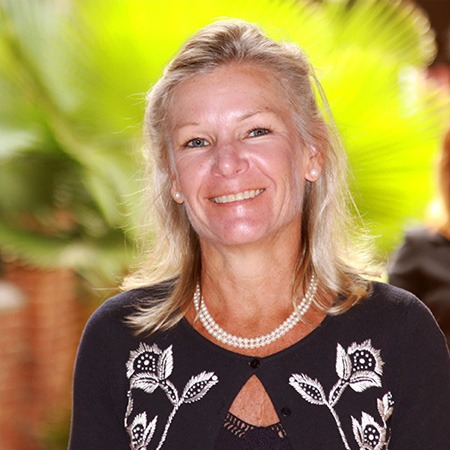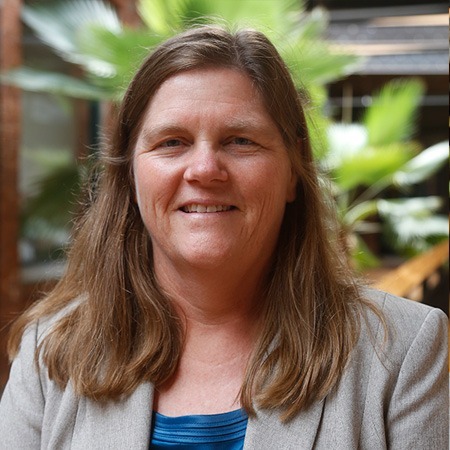Greenhouse gas reporting: A primer
By Judd Mahan, P.G., and Katherine Amidon, AICP (Posted July 30, 2021):

Calls for sustainability, the demands of consumers, and the complex web of challenges are not going away. Like with many difficult problems, wading in and getting acquainted with the parts and pieces of addressing carbon footprints is the best way to start.
This spring at the Kentucky Chamber of Commerce Environmental Conference, SynTerra’s Katherine Amidon spoke about measuring a company’s greenhouse gas (GHG) emissions footprint. There were several good questions and comments from the audience. This blog post expands on answers to a couple of those questions, one about navigating the many reporting formats and another about setting goals once you have measured an initial GHG footprint. Much of this information pertains to companies and industry. However, those involved with many other organizations, such as municipalities, governmental agencies, and nonprofits, will benefit from an understanding of the GHG reporting process.
The following regulation and organizations provide many of the formats for reporting GHG emissions:
- 40 CFR Part 98
- IIRC
- CDP
- GRI
- SASB
- SEDEX
Fortunately, most of the organizations recognize the World Resources Institute (WRI) approach to GHG reporting, the GHG Protocol with Scopes 1, 2, and 3. This accounting standard is widely used around the world and is currently voluntary in the U.S. The Intergovernmental Panel on Climate Change (IPCC) is the United Nations body for assessing the science related to climate change. The tools from the GHG protocol are consistent with those proposed by the IPCC. Furthermore, key organizations are involved in alignment discussions; the Integrated International Reporting Council (IIRC) and the Sustainability Accounting Standards Board (SASB) already have merged.
History of environmental sustainability reporting
When confronting the landscape of report formats, methods, and organizations, it can be helpful to take a step back and consider how we got to this point. Interest in environmental sustainability as an aspect of company operations began as an outgrowth of selective investing. Since the 1960s and ’70s, institutional investors such as pension funds, mutual funds, and endowments have participated in selective investments. With respect to environmental sustainability, reporting is now broadly accepted to be part of a concept known as environmental, social, and corporate governance (ESG). Historically, there are many examples of selective investments.
In New York City after World War II, the Hospital Workers Union and the International Brotherhood of Electrical Workers successfully invested in affordable housing that benefited their members as well as their communities. This is a historical example of selective investment in the social arena. The environmental arena involves efforts to mitigate climate change and pursue other environmental stewardship initiatives. When we talk about carbon footprint analysis and consumers of that data, we are talking about investors who are interested in how companies’ efforts to advance environmental goals are reflected in overall company success. Although today more consumers than just institutional investors are interested in GHG reporting, much of the reporting infrastructure was developed in response to the needs of institutional investors.
The history of selective investment is steeped in financial accounting and the demonstration of value creation by environmentally sound practices. However, best accounting practices are not agreed upon globally. U.S. corporations prepare financial statements according to Generally Accepted Accounting Principles (GAAP), whereas most corporations outside the United States report their financial records according to International Financial Reporting Standards (IFRS). There is plenty of divergent reporting of subjects other than GHG emissions.
Those involved with GHG reporting must also navigate the divergent matters of financial value and environmental regulations. In the United States, the Greenhouse Gas Reporting Program (GHGRP) under 40 CFR Part 98 is the primary environmental regulatory framework. The GHGRP provides a national greenhouse gas registry and might figure prominently in future policymaking concerning GHG emissions. Although the GHGRP includes some variations on the GHG Protocol, much of the program aligns with the approach of the GHG Protocol.
Organizations involved
Certainly, the multitude of systems and agencies poses reporting challenges. As noted, there are moves toward aligning the systems. In April 2021, SASB and IIRC hosted webinars to introduce the combined framework that will operate as the Value Reporting Foundation. Sherrie Trecker, Sustainability Officer for the Washington State Investment Board, spoke as a representative of the institutional investing community. She noted that the two entities are complementary — the SASB indicates what to report, and the IIRC demonstrates how best to report it. For more information about the reporting formats and organizations discussed, please see the listing after the conclusion.
You have a GHG emissions baseline … so what next?
First, the distinction between independent and dependent targets should be made. Then, for establishing actual targets, the Supplier Ethical Data Exchange (SEDEX) workbook provides good general advice (details below).
Graham Harris, a GHG reporting consultant, makes a good point in his February 2021 article (https://www.fireflyghg.eco/post/ghg-target-setting): The right kind of target to set is an independent one. Dependent targets will always be affected by another variable such as production volume or revenue. Since the global target is to get to net zero (an independent target), company targets should either be independent, such as reducing overall company emissions by 30 percent against the baseline year regardless of company growth, or a combination of independent and dependent.
The SEDEX Supplier Environmental Workbook lists ways that companies can help reduce their overall greenhouse gas output:
- Encourage workers to use public transportation, cycle, or carpool to work.
- Switch to electric-powered site vehicles.
- Combine increased efficiency of plant equipment, like air-conditioning systems, with use of renewable resources such as solar and wind power.
- Participate in a carbon offset program.
- Minimize GHG emissions within your company’s sphere of influence. Source raw materials from suppliers that limit greenhouse gas output.
- Consider aiming for carbon neutrality by use of offset programs, and carbon capture and storage.
Conclusion
Yes, there are many moving parts to sustainability reporting. We see decarbonization claims and climate change-related stories in the media every day. The push toward sustainability, the demands from consumers, and the challenges we face to get there are not going away. Like many difficult problems, wading in and getting acquainted with the parts and pieces is the best way to start. In the press release to announce the merger of IIRC and SASB, Value Reporting Foundation officials stated that they are working with the international accounting body, the IFRS Foundation, and other reporting organizations to further align sustainability reporting.
The press release included a statement from Michael Bloomberg, 2020 U.S. presidential candidate and Chair Emeritus of the Value Reporting Foundation. Mr. Bloomberg stated: “We’re seeing a lot of great progress on sustainability disclosure and integrated reporting, especially when it comes to the risks and opportunities around climate change. This merger is another important step forward toward a stronger, more resilient economy — and a brighter, safer future.”
Consider diving in now, if you haven’t already, so your company is ready get green.
——————————-
The following provides brief summaries of the regulation and organizations listed in this post. The first item (GHGRP) is mandatory in the United States. Participation in the other organizational reporting formats is voluntary in the United States but might be mandatory for companies, depending on location of operations outside the United States, or according to specific client requirements.
U.S. Federal Register 40 CFR Part 98 — Mandatory Greenhouse Gas Reporting
- Published in 2009, the regulation requires reporting of GHGs from large emissions sources, fuel and industrial gas suppliers, and carbon dioxide (CO2) injection sites in the United States. The program is commonly known as the Greenhouse Gas Reporting Program (GHGRP).
- Reported data are publicly available, and companies can compare data across peer facilities.
- Applies to direct greenhouse gas emitters, fossil fuel suppliers, industrial gas suppliers, and facilities that inject CO2 underground for sequestration or other reasons. In general, the threshold for reporting is 25,000 metric tons or more of carbon dioxide equivalent (CO2e) per year. Reporting is done at the facility level.
- For reporting year 2019, more than 8,000 facilities and suppliers were covered. Approximately 3 billion metric tons of CO2e emissions were reported, which represents 85-90 percent of total U.S. GHG emissions. The remaining emissions are related to agricultural sources and land use changes that are not part of the GHGRP.
- Most small businesses are not required to report.
- Annual reporting is due on March 31, submitted electronically to the USEPA using the e-GGRT tool.
SEDEX
SEDEX is a nonprofit membership organization established in 2004. It gathers and provides social impact and environmental sustainability information across global supply chains. One of its primary objectives is to ensure and document ethical workplace conditions. The organization maintains a regional presence in the United Kingdom, Australia, India, Latin America, and China. Smaller companies use SEDEX to demonstrate performance while large companies use SEDEX services to confirm their supply chain aligns with company social and sustainability objectives. Sharing of information is both up and down the supply chain, so members benefit from other members’ reporting.
IIRC
The International Integrated Reporting Council (IIRC) was founded in 2010 with support of the International Federation of Accountants (IFAC). Based in England and Wales, the IIRC is “a global coalition of regulators, investors, companies, standard setters, the accounting profession, academia, and NGOs.” (https://integratedreporting.org/the-iirc-2/)
IIRC reporting is often referred to simply as integrated reporting (IR). The information deals with how a company’s approach to six capitals creates value over short, medium, and long-time periods. The six capitals are financial, manufactured, intellectual, human, social and relationship, and natural. These are the resources and relationships “used or affected by the organization.” IR reporting demonstrates the role in which environmental sustainability measures play. (https://integratedreporting.org/FAQS/#what-are-the-capitals) Therefore, emissions are one component of a broader range of subjects that go into integrated reporting.
To help simplify the corporate reporting system, IIRC and SASB merged their organizations in June 2021. The new organization is called the Value Reporting Foundation (VRF).
CDP
CDP is an international nonprofit organization that manages an environmental impact disclosure system. They use a questionnaire format aligned with the Task Force on Climate-related Financial Disclosures (TCFD) recommendations. Questionnaire types cover climate change, forests, and water security. The TCFD was a United Nations project from 2015 to 2017 tasked with creating guidance to be used in support of the global financial sector to better understand companies’ environmental risk profiles.
CDP provides support and guidance to companies, cities, states, and regions interested in disclosing environmental impact information. Their data set is used by companies to compare themselves to peers, improve their results, and inform investors in terms of environmental stewardship.
Scope 1, Scope 2, and Scope 3 are used as the basis for reporting GHG emissions. CDP’s framework goes further than emissions reporting. It gathers information on corporate governance, strategy, and risk management in addition to metrics such as emissions calculations.
GRI
The Global Reporting Initiative (GRI) was started in 1997 in response to the Valdez oil spill and demands that companies be accountable for standards that are protective of the natural environment. The reporting process, referred to as sustainability disclosure, addresses impact on the economy, society, and the environment. GRI is a broad framework that includes items such as management approach, market presence, procurement practices, anti-corruption, and biodiversity, in addition to emissions reporting. For emissions reporting, GRI uses GHG Protocol Scopes 1, 2, and 3.
SASB
The Sustainability Accounting Standards Board (SASB) gathers industry-specific data on financially material sustainability information. It was founded in the United States in 2011 with a focus on expanding accounting language to help describe environmental, social, and governance (ESG) issues that affect financial performance. SASB specifies use of the GHG Protocol Scopes 1, 2, and 3 as part of its metrics. As noted under the summary for IIRC, to simplify the corporate reporting system, IIRC and SASB merged as the Value Reporting Foundation (VRF).
References:
- https://www.globalreporting.org/media/bixjk1ud/statement-of-intent-to-work-together-towards-comprehensive-corporate-reporting.pdf
- https://www.everycrsreport.com/files/2020-09-18_IF11639_b12b1c8eae4f32d07c828831aff114cf855fc8de.pdf
- https://www.energy.gov/sites/prod/files/2019/10/f67/Internal%20Revenue%20Code%20Tax%20Fact%20Sheet.pdf
- https://www.nixonpeabody.com/-/media/Files/PDF-Others/IRC-Section-45Q-May-2019.ashx?la=en&hash=13CE29281BDFAC5F3EEFE29920B0CF66
- https://www.epa.gov/ghgreporting/learn-about-greenhouse-gas-reporting-program-ghgrp
- https://www.epa.gov/sites/production/files/2014-09/documents/ghgrp-overview-factsheet.pdf
- https://integratedreporting.org/news/iirc-and-sasb-announce-intent-to-merge-in-major-step-towards-simplifying-the-corporate-reporting-system/
- https://b8f65cb373b1b7b15feb-c70d8ead6ced550b4d987d7c03fcdd1d.ssl.cf3.rackcdn.com/cms/guidance_docs/pdfs/000/001/429/original/CDP-TCFD-technical-note.pdf?1512736184
- https://www.globalreporting.org/about-gri/mission-history/
- https://www.globalreporting.org/how-to-use-the-gri-standards/resource-center/?g=41fd70c5-9298-478a-bdf6-bf213d40dc3d&id=2803
- https://www.sasb.org/
- https://integratedreporting.org/news/iirc-and-sasb-announce-intent-to-merge-in-major-step-towards-simplifying-the-corporate-reporting-system/
- https://en.wikipedia.org/wiki/Environmental,_social_and_corporate_governance





